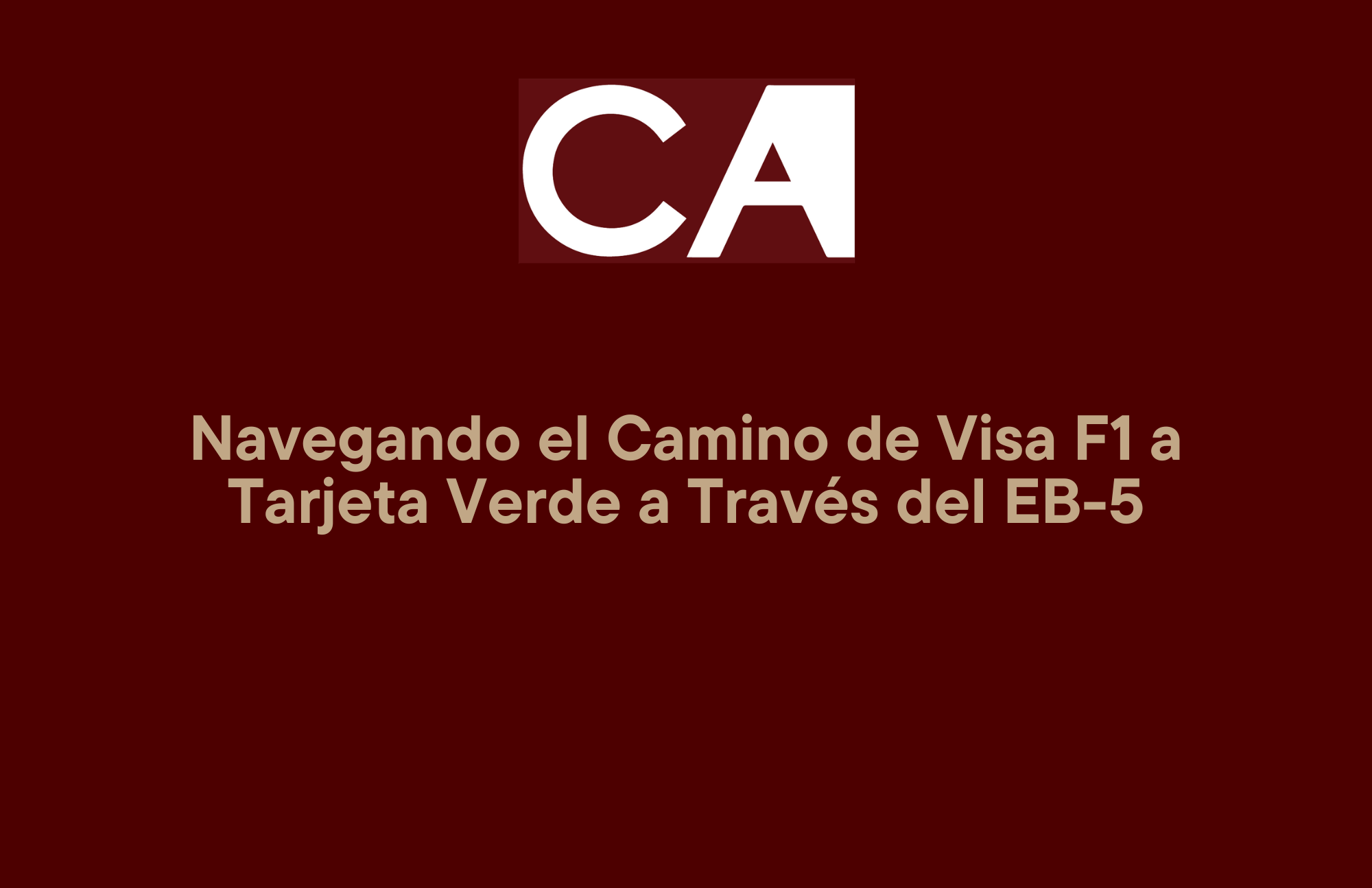Cross-Border Financial Planning for EB-5 Investors
Learn why cross-border financial planning is essential for EB-5 investors to protect wealth, reduce taxes, and avoid costly mistakes.
For EB-5 investors preparing to immigrate to the U.S., the financial transition can be as complex as the immigration process itself. In the first installment of our new series featuring insights from Paul Fegan, Managing Partner of Navis Wealth and Jason Auerbach, Managing Directors at Navis Wealth Management, we explore why early, strategic cross-border financial planning is essential for anyone pursuing a U.S. green card through EB-5.
This is Part 1 of our five-part series from CanAm and Navis Wealth.
For the full webinar recap, click here.
The EB-5 Investment Is Just the Beginning
The EB-5 program requires a minimum investment of $800,000 and a long-term commitment to living and working in the U.S. But what many investors overlook is that obtaining a green card opens the door to a new tax and legal framework—one that touches every corner of their financial life.
Paul Fegan, a leading cross-border wealth advisor with decades of experience guiding global families, describes EB-5 as “a large, personal, and intricate investment decision”—and one that must be supported by a comprehensive financial strategy.
“Once you enter the U.S. tax system, you’re playing by a whole new set of rules,” Fegan explains. “If you haven’t coordinated your global holdings, income sources, and estate plans before arrival, the consequences can be significant.”
Why You Need a Cross-Border Wealth Advisor
Unlike traditional wealth managers, cross-border financial planners are trained to navigate the intersection of U.S. and foreign tax laws. For EB-5 investors, that means coordinating:
- Worldwide income reporting obligations
- Ownership structures for foreign businesses and bank accounts
- Exposure to U.S. estate and gift tax laws
- Pre-immigration tax optimization
- Legacy planning across multiple jurisdictions
Here are three reasons EB-5 investors should consider working with a cross-border advisor before moving to the U.S.:
-
Avoid Double Taxation
U.S. residents are taxed on their worldwide income. Without proper planning, you may be taxed both in your home country and in the U.S. on the same income or gains.
-
Optimize for Pre-Immigration Gains
Capital gains realized before obtaining permanent residency may be treated more favorably than gains realized after. Timing matters.
-
Preserve Multigenerational Wealth
U.S. estate and gift tax exemptions are generous—but only for U.S. citizens. Without proactive estate planning, non-citizen families risk losing significant wealth to taxes.
Cross-Border Financial Planning Checklist for EB-5 Investors
Before entering the U.S. tax system, EB-5 investors should complete the following:
- Conduct a full inventory of global assets and income sources
- Evaluate foreign business ownership structures
- Review real estate holdings and inheritance rights abroad
- Model U.S. tax exposure under residency rules
- Consider gifting strategies or trust formation before arrival
- Begin forming your U.S.-based advisory team (CPA, estate attorney, CFP)
FAQ: EB-5 Financial Planning and U.S. Residency
Q: When do my U.S. tax obligations begin?
Typically when you receive conditional permanent residency, but substantial presence tests may apply sooner.
Q: Can I just keep all my assets offshore?
Technically, yes—but you still must report them. Failing to disclose foreign accounts or assets can lead to severe IRS penalties.
Q: Is pre-immigration planning only for the ultra-wealthy?
Not at all. Even modestly affluent families can benefit from tax efficiency, wealth preservation, and smoother transitions.
Conclusion: Plan Before You Land
Cross-border planning isn’t a luxury—it’s a necessity for anyone seeking U.S. permanent residency through the EB-5 program. As Paul Fegan emphasizes in the video, “The decisions you make before you arrive can define your financial experience for years to come.”
Stay tuned for Part 2 of this series, where we’ll cover the biggest tax traps EB-5 investors face—starting with PFICs and the worldwide income rule.
Want to learn more?
Read our full recap of the CanAm + Navis webinar here
Explore CanAm’s EB-5 current project offerings and download our due diligence guides


